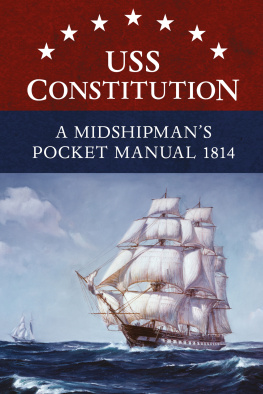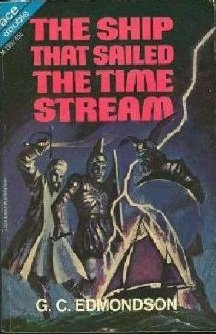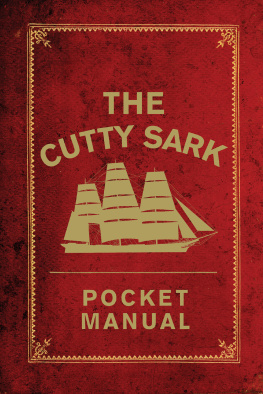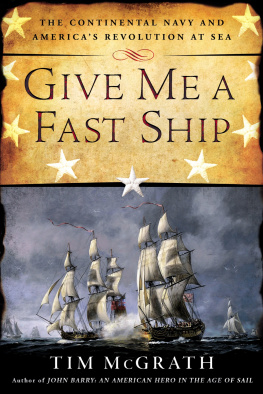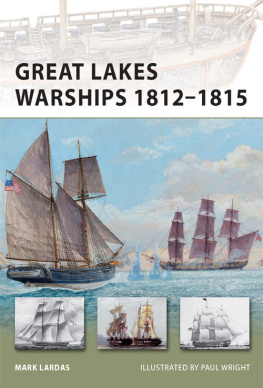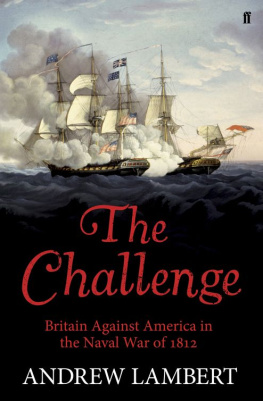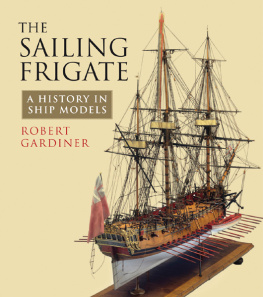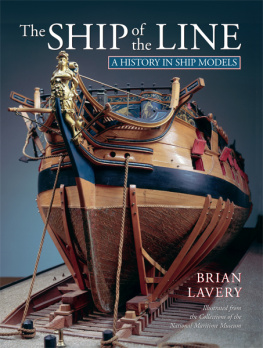
Contents
The tenure of a sailors existence is certainly more precarious than any other mans, a soldiers not excepted. Who would not be a sailor? I, for one.
Surgeon Amos A. Evans, USS Constitution, 1812
What follows is a book that was never written. In 1814, two years into the War of 1812, the US Navy Department published its revised naval regulations. What if the department, concerned about officer training in the middle of a war, had published a guide for midshipmen at the same time? To extend this fantasy further, what if the department had issued these guides tailored to the classes of vessels or even to the individual ships then in its service? That is the premise of this book.
The U.S. Navy in the Federal Era
After ratifying the Treaty of Paris of 1783, ending its Revolutionary War, the United States disbanded its navy, selling off the last of those ships in 1785. The U.S. Navy would be resurrected due to the activities of the Barbary pirates in the Mediterranean. Deprived the aegis of the Royal Navy upon independence, the new countrys merchant vessels became vulnerable to the attacks of the Barbary corsairs operating out of Tripoli, Tunis, and Algiers. The corsairs captured American ships and cargoes and held their crews for ransom. In 1794 Congress authorized the creation of a navy and the construction of six ships, among them USS Constitution , to address the Mediterranean situation.
Beginning in early 1793 the United States faced another threat to its seaborne trade. The wars of the French Revolution and Napoleonic era would last, with only brief intermissions, from 17921815. The United States would attempt to remain neutral during this long conflict and to continue to trade with both Great Britain and France, a posture satisfactory to neither European power. The conflict produced by these circumstances would ultimately lead the United States to declare war on Great Britain in 1812, the war in which USS Constitution would win her renown.
The Barbary Corsairs
At the end of March 1794, having decided that the depredations committed by the Algerine corsairs on the commerce of the United States render it necessary that a naval force should be provided for its protection, the U.S. Congress passed An Act to Provide a Naval Armament. This authorized the construction and manning of four 44-gun and two of 36-gun frigates, Constitution being one of the former vessels.
With its fleet still under construction, however, the United States at first had to negotiate rather than fight. In September 1795 the U.S. signed a treaty with the Dey of Algiers in which it agreed to pay $1 million to ransom 155 American sailors, and to make annual tribute payments in exchange for an end to corsairs attacks on American shipping in the Mediterranean and off the coasts of Spain and Portugal in the Atlantic. Treaties extending similar tributes followed in November 1796 with Tripoli and in August 1797 with Tunis.
The United States and the Wars of the French Revolution
In the meantime, the United States confronted another, more powerful foe much closer to home. In February 1793, after the execution of Louis XVI, France went to war against Great Britain, Spain, and the Netherlands. In response, on April 22 President George Washington issued a proclamation of neutrality, declaring that the duty and interest of the United States require, that they should with sincerity and good faith adopt and pursue a conduct friendly and impartial toward the belligerent Powers.
The United States would attempt to maintain that policy throughout the wars of the French Revolution and Napoleonic era. The belligerents, however, had little interest in upholding American neutrality and from the start both sides interfered with American trade intended for their adversary. In May 1793 the French government ordered its navy to seize neutral ships carrying supplies to British, Spanish, or Dutch ports. The following month Great Britain countered with orders to seize neutral ships, including American, headed to French ports. This war spread to the Western Hemisphere at the end of the year thanks to a British Order in Council, issued that November, to seize any neutral vessel carrying exports from French colonies in the Caribbean, which led to the capture of American ships and the impressment of their crews.
The Quasi-War, 17961800
The Washington administration and later that of John Adams attempted to negotiate U.S. differences with the European powers, but soon discovered that any settlement with one power only provoked retaliation from its opponent. In 1795 the U.S. reached a modest accommodation with Great Britain through Jays Treaty, only to draw the ire of France, which suspended diplomatic relations with the U.S. at the end of 1796.
In May 1797 President Adams dispatched a three-member commission to Paris to negotiate settlement of the differences with France, but his action only exacerbated the crisis. In October representatives of the French minister of foreign affairs attempted to bribe the U.S. commissioners, seeking payments as a precondition to negotiations. When Adams released details of what came to be called the XYZ Affair to Congress the following April, public outrage led Congress to suspend commerce with France and its dependencies in June 1798 and the following month to renounce the 1778 treaties of alliance and commerce with France. What followed was a two-year-long, undeclared naval war in the Caribbean between French privateers and the new ships of the U.S. Navy. This Quasi-War was settled by the Treaty of Mortefontaine, in which France and the U.S. agreed to resume normal diplomatic relations, end the Quasi-War, and annul the treaties of 1778.
The First Barbary War, 180105
Scarcely had the conflict with France in the Caribbean been resolved before trouble developed again in the Mediterranean. In May 1801 the Pasha of Tripoli, whose demands for greater tribute remained unmet, declared war on the United States. Rather than continue to pay tribute, the new U.S. president Thomas Jefferson, with the naval means at his disposal, decided to challenge the Barbary corsairs in what became the First Barbary War. Five years later, in June 1805, the American campaign culminated in a treaty between the United States and Tripoli, in which the United States agreed to pay a $60,000 ransom to recover the crew of the captured U.S. frigate Philadelphia , but in return Tripoli renounced further privateering or tribute.
Early Service of USS Constitution
USS Constitution entered service in July 1798 at the beginning of the Quasi-War. She made two undistinguished patrols during that conflict, then was retained in inactive reserve, in ordinary, at Boston from 1801 to 1803. In August 1803 she sailed for the Mediterranean and service in the First Barbary War. She remained in that sea for four years, participated in five bombardments of Tripoli in August and September 1804 as Commodore Edward Prebles flagship, and the draft of the treaty with Tripoli ending the war was completed aboard Constitution on 3 June 1805 under Commodore John Rodgers. After her return to the United States in October 1807 Constitution was inactive until being assigned to coastal patrols in August 1809. Her last peacetime cruise before the War of 1812 was a diplomatic mission to France, Holland, and England from August 1811 to February 1812. Her call at Portsmouth, England, came in November 1811, amidst the Anglo-American tensions that would lead to war only seven months later.

